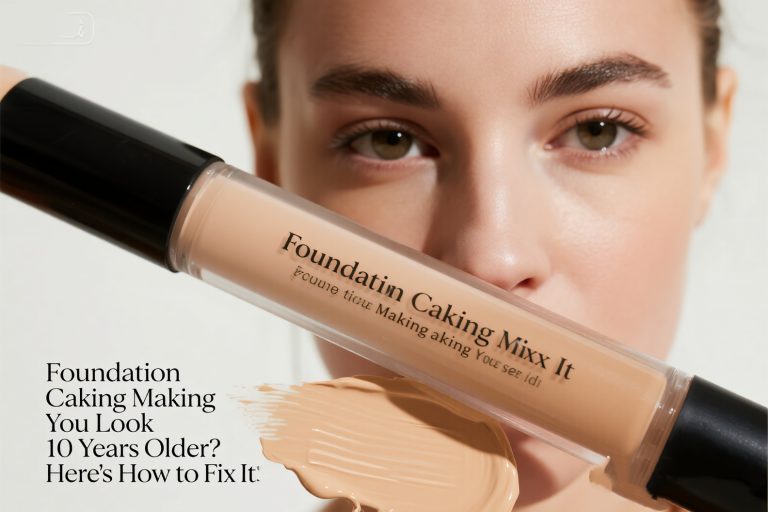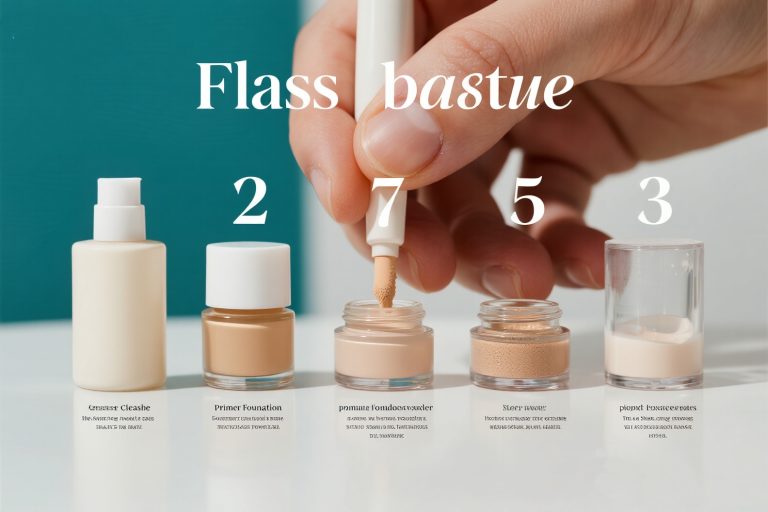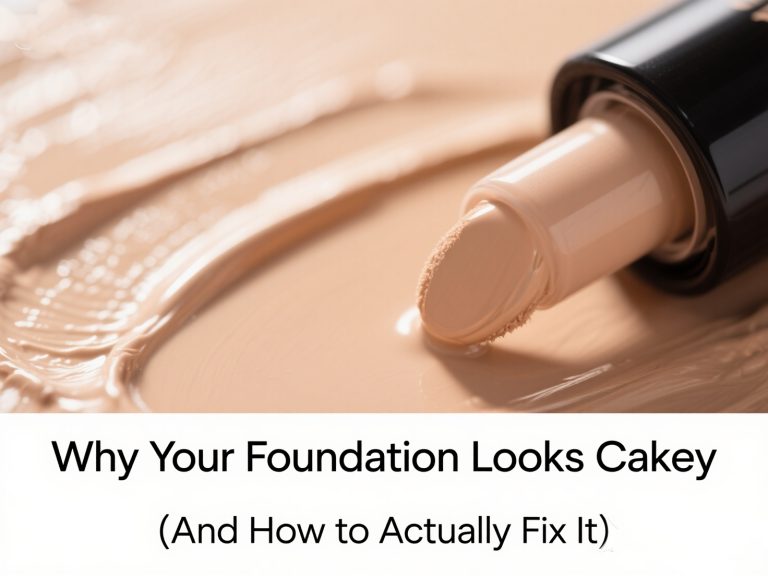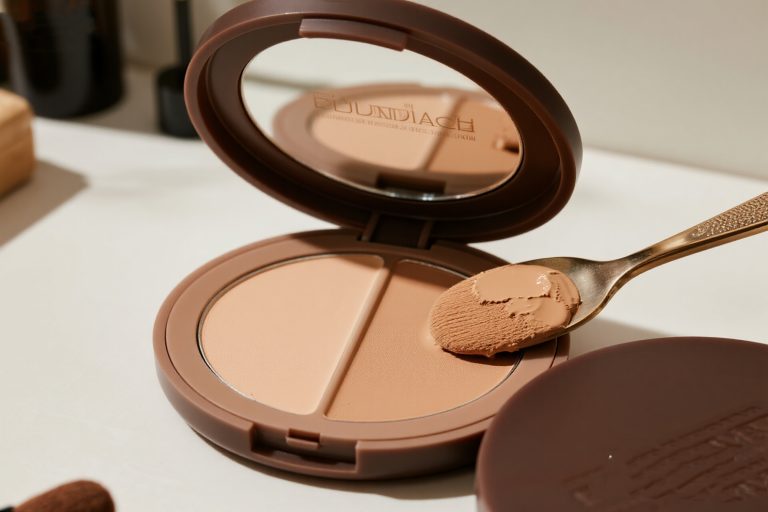Stop Blaming Your Foundation: The Real Reason Your Makeup Looks Cakey
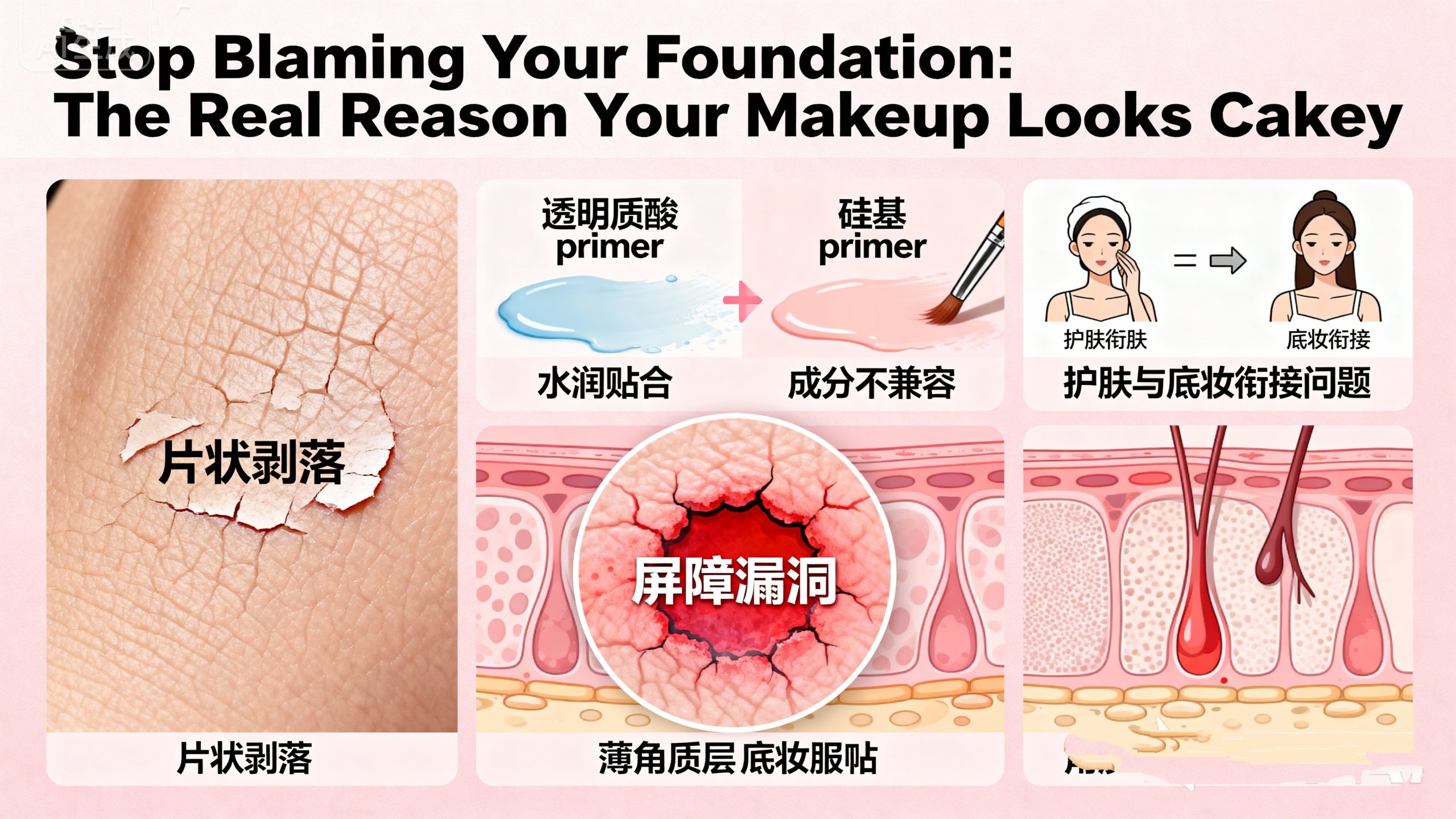
The $50 Foundation That Still Looks Like Crap
You know the drill.
Spend two hours perfecting your makeup. Feel like a goddess. Step outside for 30 minutes.
Check your phone camera and BAM.
Your foundation is literally floating on your face like a hovercraft. Your nose and chin look like the Grand Canyon. You look… dusty.
Sound familiar?
Here’s the kicker: It’s probably not your foundation’s fault.
The Problem Nobody Talks About
Most people immediately blame their products.
Wrong primer. Wrong foundation. Wrong setting spray.
So they buy more stuff. Spend more money. Get the same crappy results.
The real culprit? Your skin barrier is damaged.
And no, chugging water and slapping on more moisturizer won’t fix it.
How to Know If Your Skin Barrier Is Screaming for Help
Stop guessing. Here are the actual signs:
Physical red flags:
- Makeup looks patchy within hours
- Dry flakes that won’t quit, no matter how much you moisturize
- Skin feels tight after washing
- Products sting when you apply them
- Redness that won’t go away
The worst part?
Your skin might look fine without makeup. But the second you apply foundation, it all falls apart.
That’s because damaged skin can’t hold onto products properly. The texture is uneven. The surface is compromised.
Your foundation doesn’t stand a chance.
Why This Matters Beyond Looking Good
Damaged skin barrier isn’t just a cosmetic issue.
It’s a health issue.
What happens when your barrier is broken:
Your skin loses moisture faster than you can replace it. External irritants get in easily. Bacteria have an open door. Inflammation becomes your new normal.
You’re essentially walking around with compromised armor.
Every day your skin barrier stays damaged, you’re more vulnerable to:
- Infections
- Accelerated aging
- Chronic sensitivity
- Worsening skin conditions
Not cute. Not okay.
The Fix Nobody Tells You About
Here’s what actually works.
Step 1: Stop making it worse
Ditch the harsh cleansers. Seriously.
That foaming face wash that makes you feel “squeaky clean”? It’s stripping your skin. Cut it out.
Use gentle, pH-balanced cleansers only. Your face shouldn’t feel tight after washing.
Step 2: Rebuild the barrier
You need four things:
- Ceramides – These repair the “bricks” in your skin barrier
- Calming ingredients – Think centella asiatica to reduce redness and inflammation
- Hydration – Not just water, but ingredients like hyaluronic acid and vitamin B5
- pH balance – Your skin is naturally acidic (around pH 5.5), keep it that way
Most moisturizers only do one or two of these. You need all four.
Step 3: The makeup question
Can you wear makeup while repairing your barrier?
Yes, but strategically.
Skip full coverage during the worst days. Use tinted moisturizer or BB cream instead. Give your skin breathing room.
When you do wear makeup:
- Use silicone-free primers
- Choose mineral foundations over liquid
- Skip powder if possible
- Always remove makeup gently
Step 4: Be patient
Your barrier didn’t break overnight. It won’t heal overnight.
Give it 4-6 weeks of consistent care.
I know that sounds like forever. But think about how long you’ve been dealing with this crap already.
The Product Everyone’s Talking About
Look, I’m not here to sell you stuff you don’t need.
But if you’re serious about fixing this, the Cetaphil Sensitive Skin Multi-Dimensional Repair Cream is worth checking out.
Why it works:
It hits all four repair points I mentioned:
- Ceramides for barrier repair
- Centella for calming inflammation
- Vitamin B5 and hyaluronic acid for deep hydration
- pH 5.5 formulation
Plus it’s formulated without the stuff that triggers sensitive skin:
- No fragrance
- No mineral oil
- No alcohol
- No dyes
- No harsh preservatives
The texture situation:
Not too thick. Not too thin.
Absorbs without greasiness. Doesn’t pill under makeup. Works under sunscreen.
Basically, it does its job without being annoying about it.
Real results from actual testing:
Clinical studies show:
- 48-hour hydration retention
- Significant reduction in redness within 2 weeks
- Improved skin texture in 4 weeks
- Suitable for sensitive skin (patch tested)
What Users Actually Say
Here’s the truth from people who’ve used it:
“Finally a face cream that doesn’t make my skin freak out.”
“My makeup actually stays on now. Game changer.”
“Redness is way better. Didn’t realize how red I was until it calmed down.”
“Doesn’t break me out, doesn’t feel heavy. Just works.”
The Bottom Line
Stop buying new foundations.
Start fixing your skin.
A damaged barrier makes even the best makeup look terrible. A healthy barrier makes cheap makeup look good.
Focus on repair first. Everything else follows.
Your skin isn’t the enemy. It’s trying to tell you something.
Listen to it.
Quick Action Plan
This week:
- Switch to gentle cleanser
- Get a barrier repair cream with ceramides
- Stop using actives (retinol, acids, etc.)
- Add physical sunscreen
Next 4 weeks:
- Use barrier repair cream twice daily
- Keep routine minimal (cleanser, cream, sunscreen)
- Reduce makeup frequency if possible
- Monitor improvements
After 4 weeks:
- Assess skin improvement
- Slowly reintroduce active ingredients if needed
- Return to normal makeup routine
- Maintain barrier health long-term
Your face will thank you.
And your makeup will actually look like the Instagram filters you’ve been trying to replicate.
Win-win.

